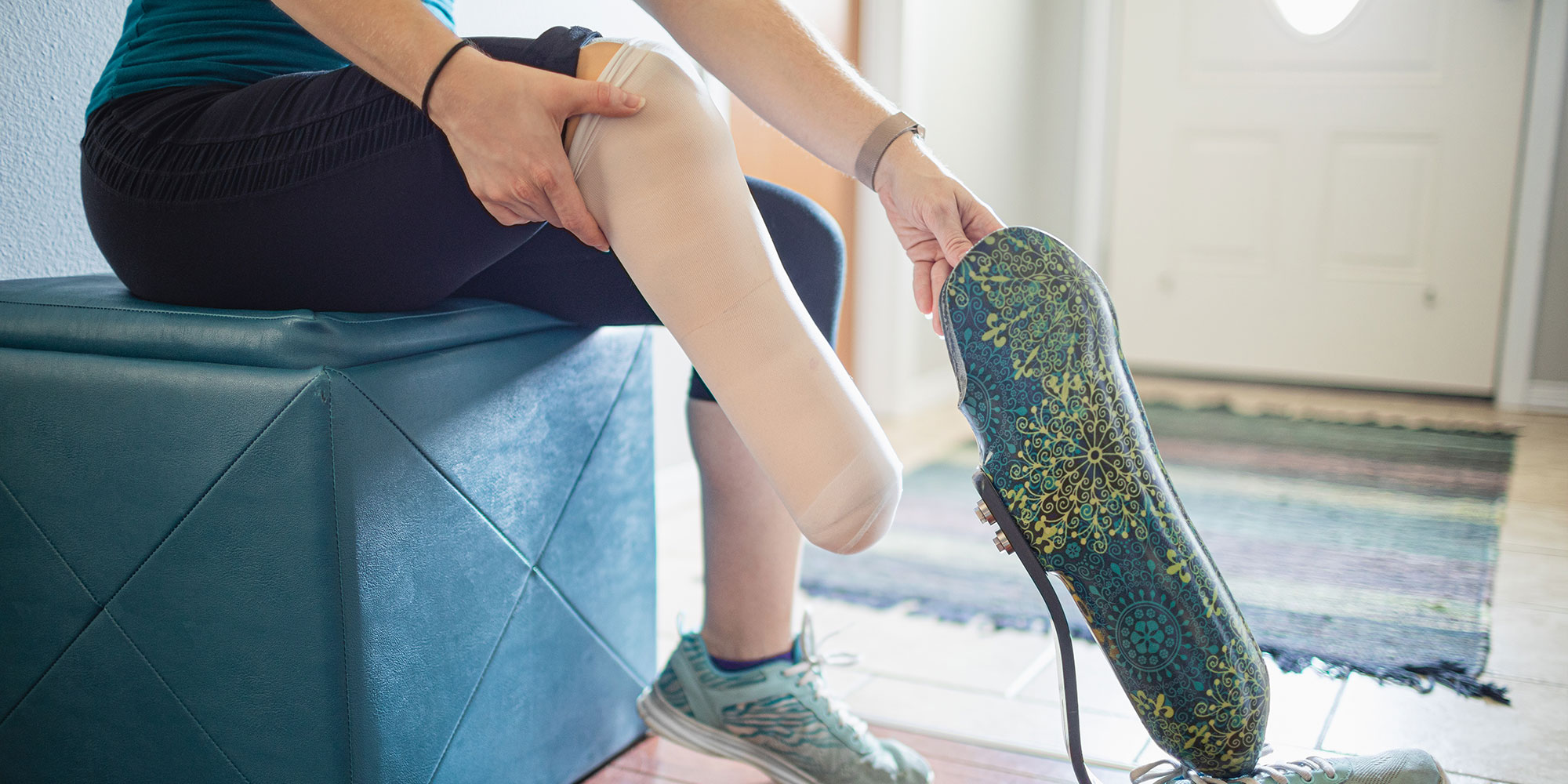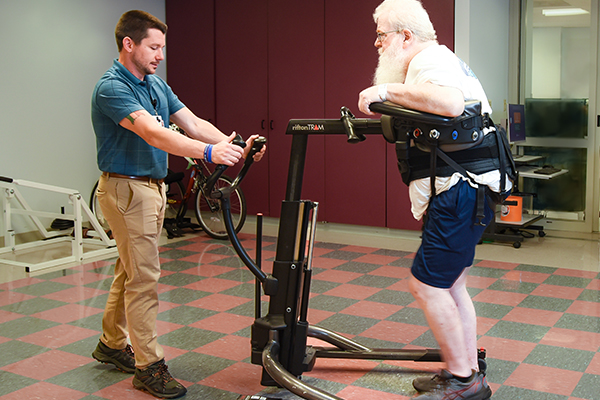Lower Extremity Amputee Rehabilitation

Nationally Recognized Amputee Care

After lower extremity (leg, foot or toe) amputation, you can still live a full, active life. Sunnyview Rehabilitation Hospital delivers nationally recognized care that maximizes your independence. Our experienced team teaches you how to navigate everyday challenges and take care of yourself. You benefit from a range of specialized therapies, along with the support you deserve.
Who Is Lower Extremity Amputee Rehabilitation For?
These services are for people who had surgery to remove all or part of their leg (amputation). This type of surgery may be necessary due to a life-threatening infection, severe injury or poor blood flow.
Rehabilitation after leg amputation occurs in two phases:
- Recovering from surgery and preparing for an artificial leg (prosthesis)
- Learning how to use a prosthesis and take care of your remaining (residual) leg
Lower Extremity Amputee Rehabilitation at Sunnyview: Why Choose Us?
You benefit from highly skilled specialists who show you how to adapt to physical changes and cope with the impact on your life. Our commitment to rehabilitation excellence earned Sunnyview recognition from the Commission on Accreditation of Rehabilitation Facilities (CARF®). We are among the few facilities in New York state with this designation.
Highlights of our program include:
- Comprehensive inpatient rehabilitation: You receive coordinated services from a team that cares about you as an individual. Doctors, nurses and therapists help you heal and learn new skills for daily life. You also receive emotional support from counselors and practical advice from fellow lower extremity amputees (peer mentors).
- Family-centered approach: As your recovery progresses, we teach you and your loved ones how to keep you safe at home and avoid complications. If you live nearby, a therapist may visit your home. This visit helps our team tailor your care instructions. After discharge, a nurse visits or calls to answer questions. Explore discharge planning.
- Excellent outcomes: At Sunnyview, people with leg amputations return home as soon as it is medically safe to do so. And nearly all families who choose Sunnyview would recommend us to others.
Inpatient Lower Extremity Amputee Program Outcomes - 2024
We’re proud to share our Inpatient Lower Extremity Amputee Program outcomes and patient satisfaction for 2024, which compares favorably with inpatient rehabilitation programs throughout the region and the nation.
Individuals Served
108
Length of Stay
17 days
Returned Home Directly
from Their Stay at Sunnyview
60%
98%
of the patients served by our inpatient programs would recommend Sunnyview to family and friends
Our Team Approach to Rehabilitation After Leg Amputation
An experienced team works together to help you achieve your recovery goals and move forward with your life. Meet our physical rehabilitation team.
Our team includes:
- Physiatrists (rehabilitation medicine doctors) specializing in caring for people who have had a leg amputation. They guide your care and are at your bedside nearly every day.
- Nurses who use leading care methods based on the latest research. Many of our nurses are certified in rehabilitation nursing. They provide round-the-clock care during your recovery.
- Prosthetists who ensure you receive the appropriate leg prosthesis for your needs and teach you how to use it.
- Physical and occupational therapists who are specially trained to help you achieve the highest level of functioning. Our therapists are passionate about helping lower limb amputees achieve their full recovery potential.
Recovering from Amputation and Preparing for Your Leg Prosthesis
During the first phase of leg amputee rehabilitation, your care includes:
- Physical therapy builds up strength and balance. Therapy also includes gentle stretches to lengthen muscles near the amputation site and preserve your range of motion.
- Preparing your leg for a prosthesis, which may include wearing a special bandage or compression sock to prevent fluid buildup.
- Occupational therapy teaches you how to get in and out of bed or a wheelchair safely. We also teach you how to take care of yourself, including special techniques for emptying your bladder.
- Family support helps you and your family cope with changes in your abilities and how they may impact your future. Therapists teach your loved ones how to complete care tasks so they can become active partners in your recovery.
- Peer mentors are a trusted source for information and encouragement about life after lower extremity amputation.
Learning How to Use Your Leg Prosthesis
After completing phase one, you go home until your prosthesis is ready. During the second phase of rehabilitation, therapists and prosthetists teach you how to:
- Put the leg prosthesis on and take it off
- Safely get around, including walking on uneven surfaces and how to go up and down stairs
- Take care of the skin on your residual limb and protect it from blisters
- What to do if you fall or experience skin complications
Additional Services for Lower Extremity Amputees and Their Families
Additional services for you and your family include:
- Amputee support group: Our weekly support group is open to the public. Amputees and their loved ones have the opportunity to share experiences and learn from each other. For more information, call our case management department at 518-382-4516.
- Driver rehabilitation: Our occupational therapists help you safely get back on the road. Assessments, lessons and special equipment enable people with disabilities to maintain control of their car. Read more about driver rehabilitation.

Start Your Recovery
Call us today for more information about our rehabilitation programs.
Fax: 518-386-3619
Call: (518) 382-4516